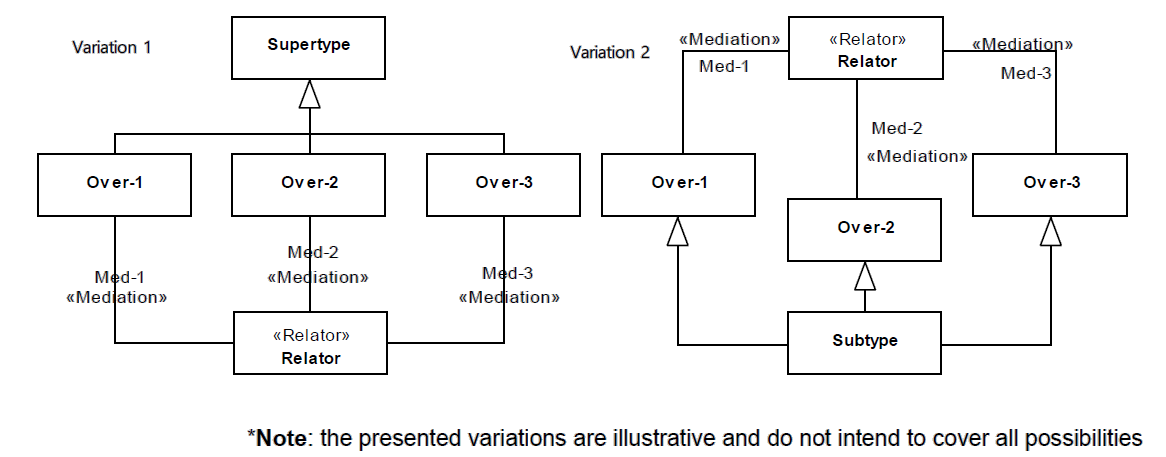RelOver anti-pattern
- Full name
Relator Mediating Overlapping Types
- Type
Logical
- Feature
Relator
- Description
A relator connected, through mediations, to two or more types whose extension possibly overlap. The sum of the mediations’ upper bound cardinalities of the mediated end must be greater than 2.
- Justification
Although OntoUML imposes no syntactical constraints on formal relations, it does not mean that modelers can use them at will, what is a very common practice.
- Contraints
Let M be the set of identified mediations, mediatedEnd(m) the function that returns the association end opposed to relator of a mediation m, and upper(p) the function that return the upper bound cardinality of a property p, then:
\[\sum_{}^{upper} (mediatedEnd(mn)) > 2\]Let O be the set of types mediated by Relator, then:
\[\exists x,y \in O \ | \ overlap(x,y)\]
- Examples

- Refactoring Plans
[OCL] Exclusiveness *: choose this option to forbid the same individual to play multiple roles w.r.t the same relator instance. Create an OCL invariant according to the following template:
context Relatorinv: self.over1.oclAsType(Supertype)->asSet()->excludesAll(self.over2.oclAsType(Agent)->asSet() andself.over1.oclAsType(Supertype)->asSet()->excludesAll(self.over3.oclAsType(Agent)->asSet() andself.over2.oclAsType(Supertype)->asSet()->excludesAll(self.over3.oclAsType(Agent)->asSet())[OCL] Partially exclusiveness: choose this option to forbid a subset of mediated types as exclusive.
[Mod/New] Disjoint mediated: Enforce types to be disjoint through the creation or alteration of a disjoint generalization set.
* Note: to make all types exclusive, every binary combination should be explicitly ruled out
References:
Prince Sales, Tiago. (2014). Ontology Validation for Managers.